
Adobe Illustrator is favored for its ease of use when creating professional graphics, drawings, and logos. The one common complaint is that users frequently have to recover Illustrator files when the app or computer system crashes. There are also times when the user accidentally closed Adobe Illustrator without saving the files.
Before assuming your files are gone for good, it’s worth learning how to recover Illustrator files quickly — including a few simple methods for restoring unsaved projects after a crash or accidental closure.
Quick Actions for Illustrator File Loss
If Illustrator suddenly crashed or you closed it before saving, don’t rush into complex recovery tools yet. There are a couple of quick things you can do that often bring your artwork back in less than a minute.
❓ Note: The examples below show the process on macOS. The same steps work on Windows too — the names of a few buttons may differ, but everything else is nearly identical.
Action 1: Reopen Illustrator to Recover Unsaved Work
If you need to recover an Illustrator file after a crash, reopen the program right away — Illustrator usually scans for unsaved sessions automatically and restores them on startup. If recovery data exists, the program loads your unfinished file automatically and places it right on the screen — no menus, no searching.
Once it appears, do this right away:
- Review the content to confirm it’s the correct project.

- Go to File > Save As.

- Choose a new file name and location to prevent overwriting the damaged version.
- Click Save.
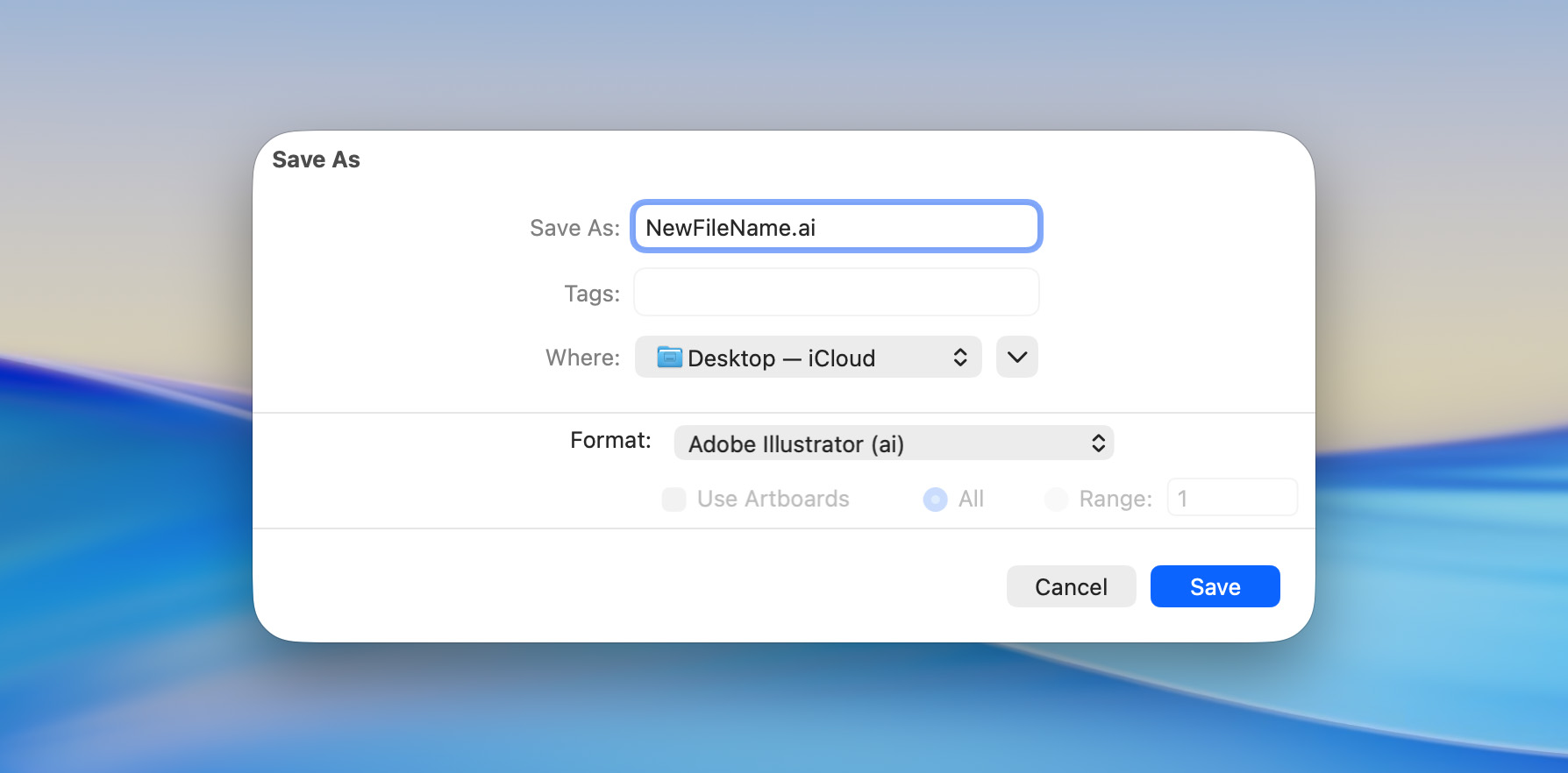
If no files show up after launching Illustrator, it’s likely that the backup folder’s missing stuff or auto-save was off during the crash. Still, reopening the app is always worth a try before moving to deeper methods.
Action 2: Check the Recycle Bin (or Trash)
Sometimes the file isn’t lost at all — it just ended up in the Trash or Recycle Bin. It only takes a few seconds to check.
- Click the Trash icon in the Dock.
- Search for your Illustrator file by name or extension (.ai).
- Right-click the file and choose Put Back to restore it to its original folder.

The file goes right back to its original folder, and you can open it again in Illustrator like nothing happened.
How to Recover Permanently Deleted or Lost Illustrator Files
If the quick actions didn’t bring your artwork back, there’s still a good chance your Illustrator files can be recovered. Even after deletion, the actual data usually remains on your drive for a while — it’s just hidden from the system until new information overwrites that space. Acting quickly gives you the best odds.
In this part, we’ll go through the most reliable ways to restore permanently deleted or missing .ai projects. These steps work on both macOS and Windows, and they don’t require advanced technical knowledge — just a bit of patience and attention to detail.
Method 1: Use Data Recovery Software
Data recovery software, like Disk Drill, can bring back Illustrator projects that were deleted, lost, or even overwritten — for instance, when a new file with the same name replaces the old one. The app scans your drive for traces of older data and rebuilds the files if the original blocks haven’t been fully rewritten.
On Windows, the free version lets you recover up to about 100 MB of data — usually enough to get a few Illustrator files back. But on Mac, the trial works a little differently: it doesn’t actually restore files, but it allows you to scan your drive and preview everything that can be recovered. This way, you’ll know in advance if your lost artwork is still there before deciding whether to proceed.
Note: Recovery on internal SSDs can be limited because of the TRIM command. TRIM automatically clears memory blocks after deletion, which sometimes erases data before any recovery tool can reach it. The sooner you run Disk Drill after losing a file, the higher your chances of success.
- Download Disk Drill and install it on a different drive than the one you lost data from Then launch it.
- Disk Drill will list all available drives in your system; you will need to select the one with the lost data.

- Click Search for lost data, then choose Universal Scan — this option combines all available scanning methods and gives the most complete results.
- Wait for the scan to complete, it might take a few minutes, it depends on the size of your target drive.
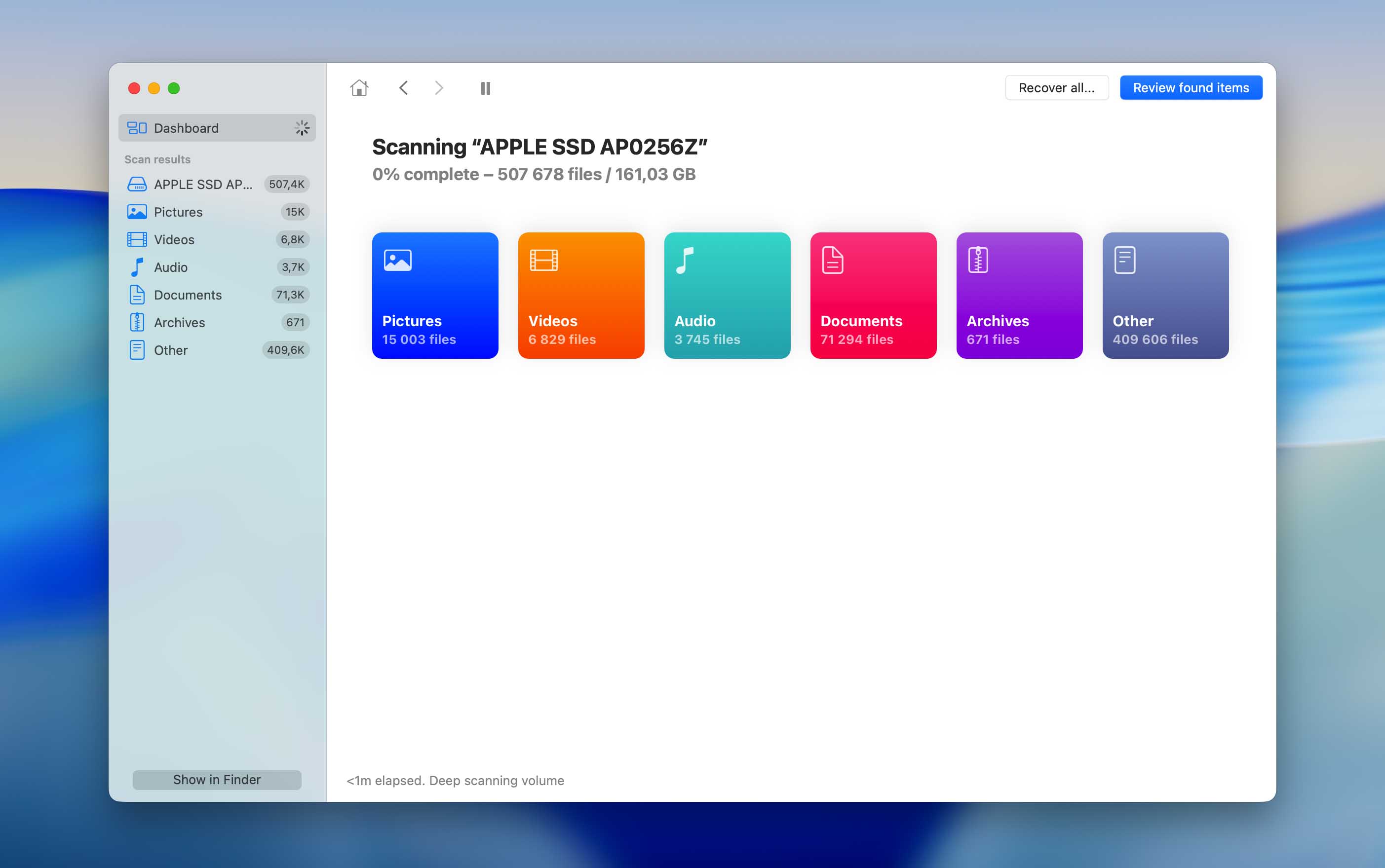
- Once the scanning is complete, Disk Drill will present you with a list of recoverable files. All you need to do is select which files you want to recover and start the recovery process.
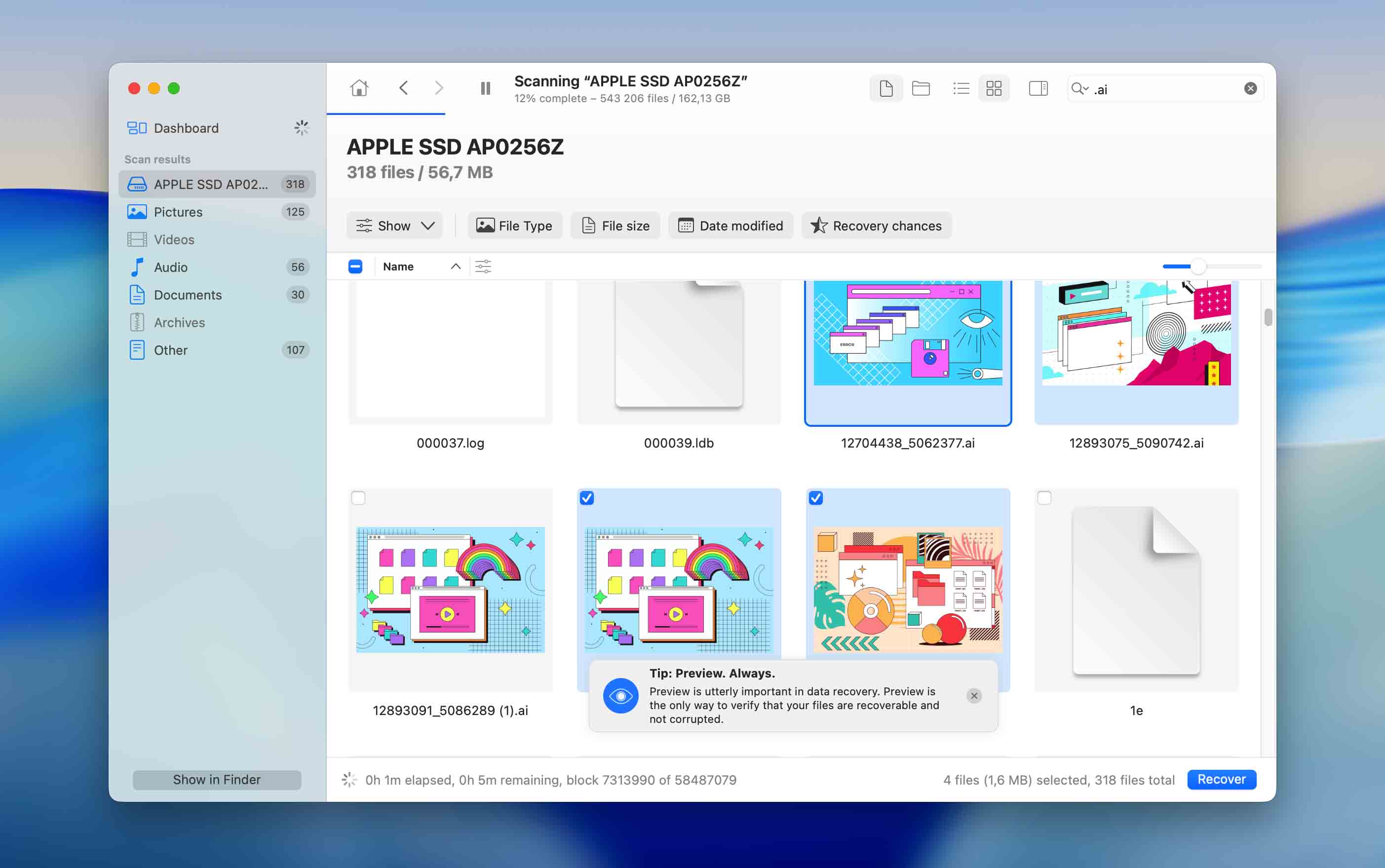
Method 2: Use Built-in Backup Options
Backups are the quiet safety net most people forget they have. If you ever turned them on — even once — your Illustrator file might still be sitting there, untouched. Backups work in nearly every kind of data loss: accidental deletion, drive errors, even full reinstalls.
We don’t place this method first only because not everyone has backups enabled. Still, it’s always worth checking — many users discover they set up automatic backups long ago and never turned them off.
On macOS (Time Machine)
- Connect the drive or server that stores your Time Machine backups.
- Open the folder where the missing .ai file originally was — for example, your “Designs” or “Projects” folder.
- Click the Time Machine icon in the menu bar and select Browse Time Machine Backups.

- Use the timeline on the right to move back to a day before the file disappeared.
- When you see the version that contains your Illustrator file, select it and click Restore.
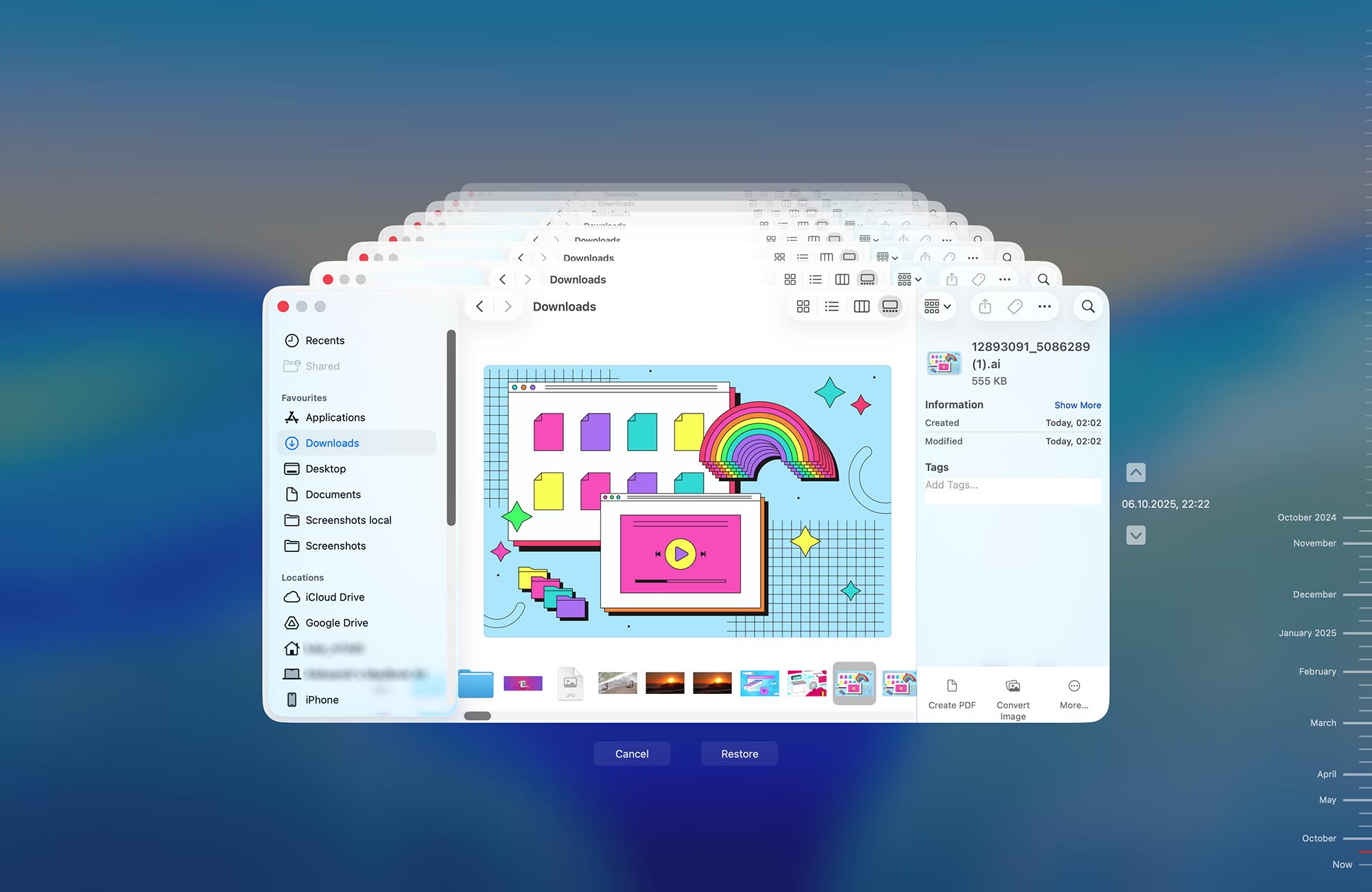
The file will reappear right where it used to be. To be safe, open it in Illustrator and save a copy under a new name or in another folder, so you don’t overwrite the restored one later.
On Windows (File History via Control Panel)
- Connect the external drive or network location used for File History.
- Open Control Panel → System and Security → File History.

- Click Restore personal files in the left panel.
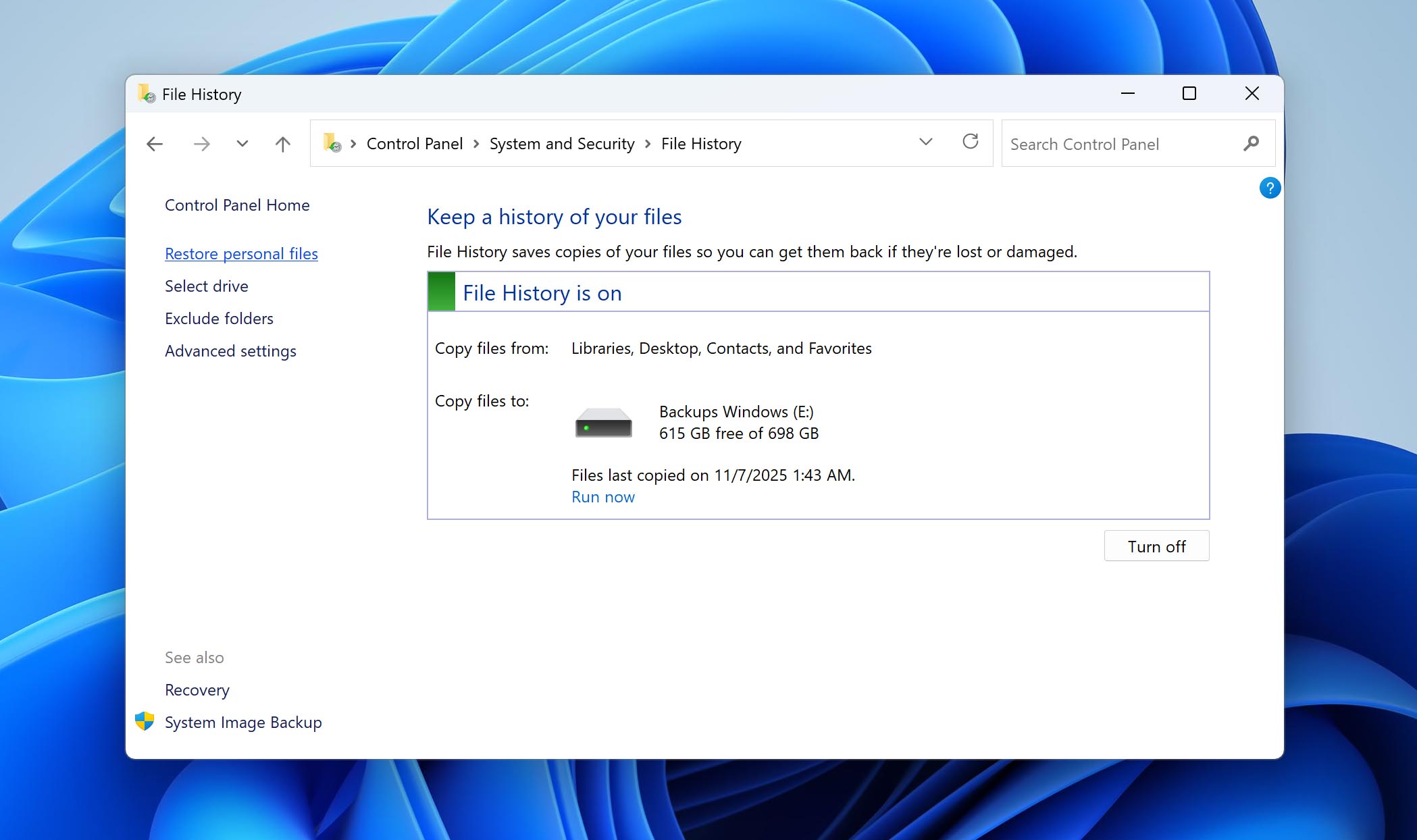
- Browse to the folder where your Illustrator file was originally stored.
- Use the navigation arrows at the bottom to move between available backup dates.
- Select the correct .ai file and click the green Restore button to return it to its original location.
- To restore it somewhere else, right-click the file and choose Restore to…, then select a new folder.

If you’ve ever set up File History or Time Machine in the past, this method is worth a quick try. It often works even when everything else fails — quietly saving your work behind the scenes while you focus on designing.
Method 3: Check Cloud Storage
Many designers today store their Illustrator files in the cloud without thinking about it — OneDrive, iCloud Drive, Google Drive, or Dropbox quietly keep copies of your work while you edit. When a file disappears, these synced folders are the next logical place to look.
Even if the file seems gone from your computer, the cloud version may still exist — sometimes in the trash folder or an older sync snapshot.
On OneDrive, file deletions are synchronized, but emptying the local Recycle Bin isn’t. That means a deleted Illustrator file can still sit in OneDrive’s online trash, untouched, until you clear it manually. It’s worth opening OneDrive in your browser and checking the “Recycle Bin” section — many people find their files there long after removing them from the desktop.
On macOS, iCloud behaves a bit differently. It syncs both the deletion and the emptying of the Trash, so once you clear it locally, the file disappears everywhere. However, Apple keeps a separate Data Recovery page in iCloud settings where recently removed files sometimes remain for a limited time. Illustrator projects stored in iCloud Drive may still be recoverable there even when they’re missing from Finder.
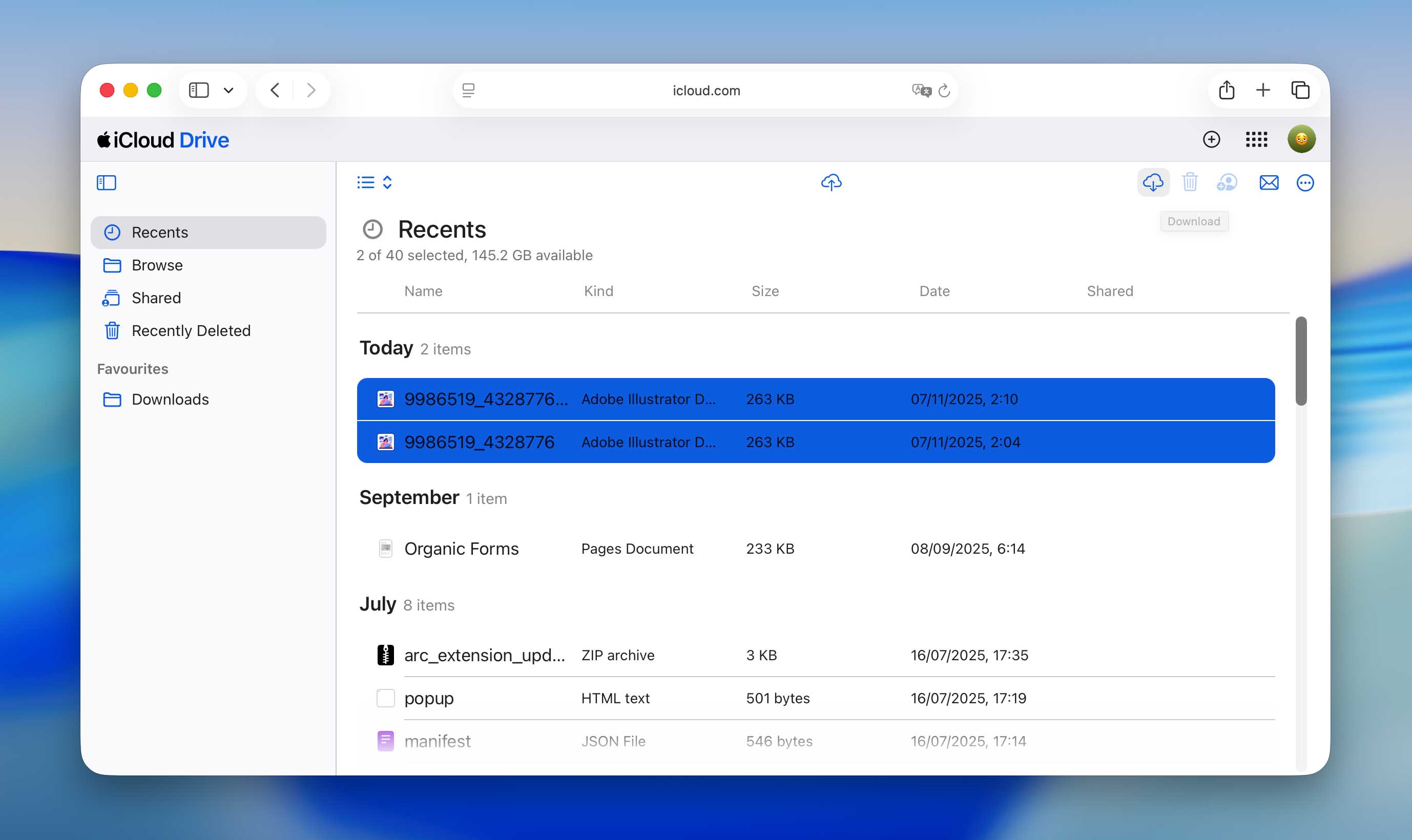
In general, whatever cloud solution you use — OneDrive, iCloud, Google Drive, Dropbox, or another — it’s always worth checking directly through the service’s website. Syncing doesn’t always mean “erased forever,” and more often than not, the file still exists somewhere in the provider’s own version history or trash.
Conclusion
When you finish restoring your work, it’s a good idea to review your saving habits — keep autosave enabled, store active projects in more than one location, and back up regularly to an external drive or a trusted cloud service.
If you work on large projects, consider saving progressive versions of the same file instead of repeatedly overwriting one copy. This simple routine makes it easier to roll back changes or recover a stable version if something goes wrong later.
At the end of the day, every case of file loss is slightly different. If you’ve tried any of the methods above or found another reliable way to bring back lost Illustrator projects, share your experience or leave your questions and suggestions below — your notes may help someone else facing the same problem.




